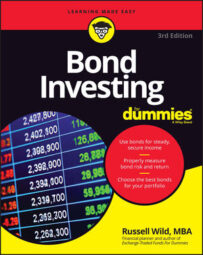The 20 times rule is a thumbprint that gives you a very rough guide of how big a investment portfolio you need before you retire. In short, figure out how much you need in a year, subtract whatever retirement income you have outside of investment income (such as Social Security), and multiply the remainder by 20.
So if you need $50,000 a year and Social Security will provide $20,000, you should build a portfolio of ($30,000 × 20) $600,000, at the very minimum, before you kiss your office colleagues goodbye forever.
That rough rule, like all rough rules, is the product of a few assumptions. Foremost, it assumes that you have a diversified portfolio returning enough so you can not only keep up with inflation but also withdraw 4 to 5 percent a year without denting your principal.
That allowable withdrawal amount depends on a whole slew of factors, such as the actual rate of inflation, your tax hit, market conditions, and — a biggie — your life expectancy and current age. (At age 97, it’s probably okay to see a slow dwindling in your portfolio size.)
A lot of those variables, such as your lifespan, can be controlled to only a limited extent (eat carrots). What you can control entirely — and what will have great bearing on how much you can withdraw — is the allocation of your portfolio, especially the ratio of stocks to bonds.
How realistic is a 4 to 5 percent withdrawal rate? According to figures from Vanguard, a retirement portfolio with an allocation of 50 percent bonds and 50 percent stocks has about an 85 percent chance of lasting 30 years, provided the initial withdrawal is limited to 4 percent and then adjusted for inflation. The number would be 74 percent over 30 years if using the 5 percent withdrawal rate.
Those numbers can be a bit depressing. It means that you need $800,000, or preferably $1 million, to generate just $40,000 a year, and even then you could still go broke before you die.
According to Steve Cassaday, CFP, president of Cassaday & Company, Inc., an investment management and financial planning firm in McLean, Virginia, if you are willing to deal with the volatility that comes with a portfolio of 80 percent equities, you should be able to withdraw up to 7 percent a year and be safe for 30 years and beyond.
Those numbers are much less depressing: You would need, to generate $40,000 a year, a portfolio of considerably less, about $570,000.
If you go that route, know that at times your portfolio will sink, and sink hard, and you’ll be wondering whether you’re going to run out of money next month. Not many people could sit tight and deal with the kind of volatility that would be inevitable with such a market-risk-laden portfolio. Also, if the future is considerably different from the past, things could turn out ugly.
Although history rarely repeats, it often echoes. The long-term return on large stocks — at least over the past century or so — has been just a bit shy of 10 percent a year. Small stocks (prone to greater price sways) have returned about 12 percent a year. The long-term return on bonds has been about 5.5 percent.
And the inflation rate moving forward, most economists agree, will probably stay somewhere close to its present 3 percent. Based on these numbers, and your final portfolio allocations, you can best judge whether a 3 percent withdrawal, a 7 percent withdrawal, or something in between can be sustained.
You need to devise your own plan based on your own expected longevity, stomach for risk, and other factors. Don’t set your expectations pie-in-the-sky and allow yourself some flexibility to adjust your cash flow after you begin to withdraw. No retirement plan should be fixed in stone.
In Work Less, Live More by Bob Clyatt (Nolo), the author suggests something he calls the “95% Rule.” It starts with a retirement plan that incorporates a reasonable rate of withdrawal: Clyatt conservatively says 4 percent, maybe 4.5 percent of your initial portfolio ($24,000 to $27,000 a year on a $600,000 portfolio), adjusted each year for inflation.
However, if the markets turn sour in any particular year or years, you economize a bit over that time period by withdrawing no more than 95 percent of what you withdrew the previous year. You’ll have to tighten your belt somewhat, but you should still be fine.
Clyatt purports that following the 95% Rule, a portfolio of stocks and bonds (50/50) with a 4.5 percent yearly withdrawal (plus adjustments for inflation) has a 92 percent chance of lasting 30 years. Those aren’t bad odds at all.

